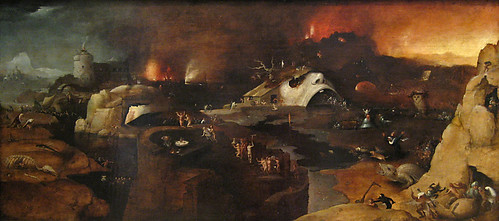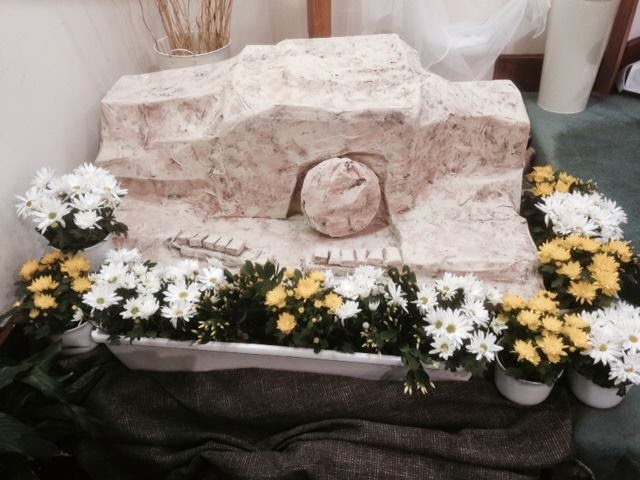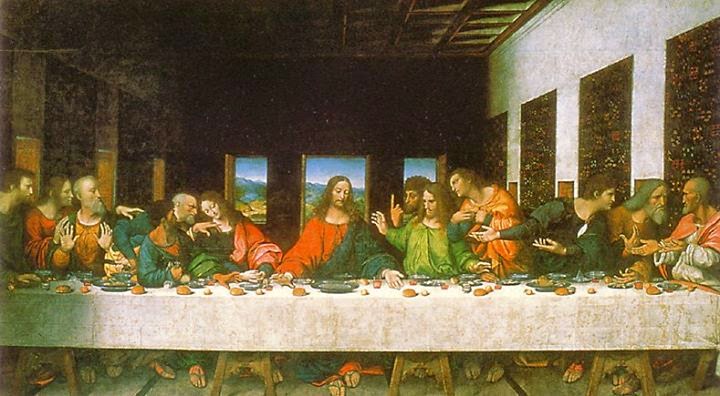http://www.christendom-awake.org/default.html
Von Speyr's life of grace
by Regis Martin
The world's greatest living theologian came to Rome a few months ago to help honor the memory and work of a remarkable woman and mystic. Her life, he said, decisively shaped all that he had written or experienced in more than 40 years.
Hans Urs von Baithasar, Swiss theologian of towering erudition, originality, faith and loyalty to the Church, addressed scholars and students from across Europe and the Americas who were attending a conference at Rome's Pontifical Lateran University on the life and thought ofAdrienne von Speyr.
Presented in terms of her "ecclesial mission", the conference attempted to show the immensity of von Speyr's gifts and service to the life of the universal Church. Pope John Paul II and Cardinal Joseph Ratzinger interrupted their own busy schedules to offer powerful and prayerful witness to the character and achievement of this truly extraordinary woman. Yet it can fairly be said that most of the Catholic world knows nothing at all about her.
Who was Adrienne von Speyr and what were the singular graces of her life - graces which, some 18 years after her death in 1967, would move three of the most commanding churchmen of this century to
peak so ardently, so authoritatively, of her legacy?
Born in Switzerland in 1902, amid the loftiest peaks on earth, it became an appropriate setting for someone destined to scale the very horizons of God. And depths, too, into which she would mysteriously fall out of an obedience freely given to Him. Depths which were to plunge her all the way down into hell, there to enact the full measure of our Lord's own dark descent which the Church calls the Mystery of Holy Saturday.
Hers was an endurance which God asked of her from the very beginning. Following her conversion in 1940 at the hands of von Balthasar (while she had no prior knowledge of Catholicism, the outline of it all, he said, was "hollowed out in her like the interior of a mold"), there commenced a lifetime's succession of "passions," culminating in the experience of Christ's own suffering on the cross.
"It is," commented von Balthasar, who was present at these missions. "Christ's final act of obedience toward His Father that He descends intohell." the place into which all the world's sin is finally cast. "In hell He encounters His own work of salvation, nor in Easter triumph, but in the uttermost night of obedience, truly the obedience of a corpse.
"He encounters the horror of sin separated from men. He walks through sin and, traversing its formlessness, He experiences the second chaos. While bereft of any spiritual light emanating from the Father, in sheer obedience, He must seek the Father where He cannot find Him under any circumstances."
And such, in vicarious ways, is precisely the harrowing which von Speyr underwent as a result of giving her consent to whatever God might wish of her; a grace, charism and mission which stands at the very center of her mystical life and of its incomparable importance to the Church.
For here is the deepest and most intimate participation in the Lord's own oblation to the Father, His mysterious self-emptying on behalf of the world and the terrible weight of its sin which he redeemed from within.
"What Adrienne experienced, von Baithasar said, 'is actually more horrible than the hell depicted for us by medieval imagination; it is the knowledge of having lost God forever.... ." So utterly real was it, he added, that for anyone blithely to dismiss the existence of hell would be, atonce, both "ridiculous
and blasphemous."
At the heart of her spirituality, the pulsating principle throughout the body of her life, is an attitude of complete transparence before God, of total effacement of self. One must acquire an attitude of obedient letting-it-happen-to-oneself for God. Her mission, therefore, consisted of "continual and complete movement away from oneself, in self-forgetfulness and virginal readiness for the word of God. It is a life, concluded von Balthasar, of "totally childlike existence in God and for God".
Always strive, she would exhort the members of the lay community which she and von Balthasar founded in 1945, to achieve that perfection of "being available" for God, of doing whatever He asks
of us to help advance the glory of the Father.
Her last years, while marked by increased suffering ("Her body, wrote von Balthasar, "was like an organ on which all, and in fact constantly new and unsuspected, stops of suffering had been
pulled out"), saw no abatement of that will, that deep disposition of soul to always avail oneself of His grace. Near the end, knowing it was the end, she exclaimed, "How beautiful it is to die!" For, then, of course, God himself lay ahead, alone in the flesh to await her.
How very different the landscape of the Church might be today if, 20 years ago, publishers in this country had made available to us the works of von Speyr (and von Balthasar too). How fortunate
we are that they are available now.
Regis Martin was studying at the Angelicum in Rome at the time and is currently lecturing at the Franciscan University at Steubenville, Ohio. Many of the works of Adrienne von Speyr and Hans Urs von Balthasar) are available from Ignatius Press /PO. Box 18990, San Francisco, Calif 94118).
December 29, 1985
Article originally in NATIONAL CATHOLIC REGISTER
Writings by Adrienne Von Speyr
+ + + + + + + +
Ratzinger on Christ’s Descent into Hell
 |
| http://whosoeverdesires.wordpress.com/2009/09/22/ratzinger-on-christs-descent-into-hell/ |
Many WD readers will recall the theological skirmish which once, twice, and thrice erupted on the pages of First Things two and a half years ago. The warring parties were Alyssa Lyra Pitstick and Fr. Edward T. Oakes, S.J. The point in question was Hans Urs von Balthasar’s controversial Holy Saturday theology, wherein he argues that Christ’s descent into hell was a passive, i.e., suffering, descent. The traditional Holy Saturday motif is of the triumphant Christ descending in glory.
Pitstick argued that it is “undeniable that [Balthasar’s] theology of Christ’s descent entails a de facto, and sometimes even conscious, rejection of Catholic tradition.” Oakes defended Balthasar’s orthodoxy, proposing that Pitstick’s “real service has been to argue against Balthasar so disagreeably that she will end up midwifing his theology into the mainstream of Church thinking.”
As this debate spilled over into the Catholic blogosphere, more than enough words were spent discussing Balthasar’s theology of Christ’s descent. I will not add any more. Instead, I would like to consider another prominent contemporary theologian’s take on Christ’s descent into hell. That theologian would be Joseph Ratzinger.
Two of Ratzinger’s early works seem to support the Balthasarian position of a suffering descent. In Introduction to Christianity, the key which Ratzinger employs to unlock the mystery of the creedal statement “He descended into hell” is Jesus’ death-cry of abandonment on the cross: “My God, my God, why have you forsaken me?” Ratzinger goes so far as to say that “Jesus’ cry on the cross” contains “the heart of what Jesus’ descent into hell . . . really means” (298).
While this aligning of Christ’s descent into hell with the death-cry from the Cross seems to suggest that Christ suffered in hell, nowhere in Introduction to Christianity does Ratzinger explicitly say that Christ suffered in hell. In the book Eschatology: Death and Eternal Life, however, he does. There the future pope uses a Buddhist image and speaks of Christ as the “true Boddhisattva” who unlike the other Boddhisattvas not only waits to enter heaven as long as one person is in hell, but goes further as “Christ descends into Hell and suffers it in all its emptiness” (216).
However, to those who now want to run off and exclaim that the Pope endorses Balthasar’s Holy Saturday theology, we must say, hold on one second. Ratzinger also has spoken on Christ’s descent into hell since becoming pope. These comments suggest a different position. In his 2007 Easter Vigil homily, the Pope preached:
Let us return once more to the night of Holy Saturday. In the Creed we say about Christ’s journey that he “descended into hell.” What happened then? Since we have no knowledge of the world of death, we can only imagine his triumph over death with the help of images which remain very inadequate. Yet, inadequate as they are, they can help us to understand something of the mystery. The liturgy applies to Jesus’ descent into the night of death the words of Psalm 23[24]: “Lift up your heads, O gates; be lifted up, O ancient doors!” The gates of death are closed, no one can return from there. There is no key for those iron doors. But Christ has the key. His Cross opens wide the gates of death, the stern doors. They are barred no longer. His Cross, his radical love, is the key that opens them. The love of the One who, though God, became man in order to die – this love has the power to open those doors. This love is stronger than death. The Easter icons of the Oriental Church show how Christ enters the world of the dead. He is clothed with light, for God is light. “The night is bright as the day, the darkness is as light” (cf. Ps 138[139]12).
Here we see Pope asking the same question he did forty years earlier as a young theology professor – how to interpret Christ’s descent into hell – and sketching a markedly different answer. Gone is the association of the descent with the death-cry. Now it is interpreted through the images of glory and light. Here the Pope seems to endorse the traditional motif rather than the Balthasarian position.
So what conclusions might we draw? It is difficult to say. One possibility is that Ratzinger’s position has changed over the decades. Or as a second option we might try to make an argument showing that Ratzinger’s position regarding Christ’s descent as exhibited in Introduction to Christianity and Eschatology is not in contradiction with the 2007 Easter Vigil homily – in other words, that the positions can be reconciled. A third option is that Pope Benedict knows and lives within the demands of his office: Whereas it is fitting for a theologian to explore innovative interpretations of dogma, it is hardly appropriate for a pope to do so. While Ratzinger as a private theologian may have some sympathy for the Balthasarian position, he knows that it would not be right, at this moment, to endorse such a position as pope.
While I tend toward a combination of the second and third options, I cannot pretend to know with much certainty what Pope Benedict thinks about Christ’s descent into hell. I do know, however, that were I ever given the chance to ask a few theological questions of the Holy Father, that of Christ’s descent would be among the first on my list.
© Vincent L. Strand and Whosoever Desires, 2009.





